Rich harvest, amazing taste and bright color - the Koenigsberg golden tomato and a guide to growing it
We present to your attention another variety from the Siberian collection of the Koenigsberg golden tomato. It will interest all lovers of yellow tomatoes due to their ease of care and excellent vegetables with a high content of vitamins, lycopene and carotene. Such tomatoes are a real find not only for northerners, but also for southerners.
The culture is divided into three subspecies, differing in color, which can elegantly decorate not only garden beds, but also cans of winter preserves.
Characteristics and description of the variety
The culture was developed in 2005 by the Siberian amateur gardener V.N. Dederko. It is intended for breeding in open and protected ground. The variety is frost-resistant, which is excellent for cultivation in Siberia.
Distinctive features

The type is indeterminate, height – 1.5-2 m, leaves are large, light green in color. The inflorescences are simple, the first cluster is formed after 10-12 leaves, each cluster forms 4-6 fruits.
Reference. Indeterminate type - without growth restriction.
Mid-season species, from the moment of sowing the seeds to full ripening, 115-120 days pass.
Productivity is high, from 1 sq. m, 15-20 kg of fruits are collected, provided that 3 seedlings are planted per 1 sq. m. m. The main distinguishing feature is the ability to set fruit in any weather conditions.
The variety is highly resistant to the main diseases of the nightshade family and withstands attacks of many pests well.
The crop requires obligatory pinching, tying and pinching - a necessary procedure for tall bushes to prevent further growth.
Fruit characteristics
The average fruit weight is 220-230 g. Larger vegetables are borne on the lower fruit-bearing branches, their weight reaches 800 g. Smaller tomatoes are tied on the upper branches, their weight is no more than 180 g. The shape is oval, pepper-shaped, yellow-golden, bright. The taste is pronounced, sweet, the flesh is juicy and aromatic. There are 4 seed chambers, few seeds, the skin is dense and not prone to cracking.
Tomatoes are stored for a long time and can withstand transportation over long distances, which is not typical for large fruits. For these reasons, entrepreneurs are considering the variety for commercial purposes.
The photo shows Koenigsberg golden tomatoes.

How to grow seedlings
Sowing seeds for seedlings begins 2 months before planting in the ground. Since the culture is not hybrid, seed material can be collected independently.
Seed preparation
The seed material is laid out on the table and carefully inspected for visible damage. Only seeds that are light in color and without distortion are left. They are then tested for germination by immersing them in a saline solution for 10 minutes. Those that floated to the surface are empty inside and are not suitable for landing. Next, the seed material is disinfected in a weak solution of potassium permanganate or 2% hydrogen peroxide. Disinfected grains are washed with running water and dried.
To improve germination, seeds are germinated on damp gauze for 2-3 days at a temperature of +25-28°C in a dark place. As the gauze dries, moisten it with warm, settled water. After the first sprouts appear, the grains are sown in the ground.
Container and soil
The container is prepared fertile and nutritious. To do this, mix garden soil with peat and humus in equal quantities. For ease, add washed river sand. The resulting mixture is disinfected with a dark potassium permanganate solution. Disinfected soil is the key to healthy growth and development of seedlings.
After disinfection, the prepared mixture is laid out in planting containers, at the bottom of which drainage holes are first made so that moisture does not stagnate.
Plant in a common wooden box or individual containers, for example, plastic cups, paper honeycombs, peat pots. The latter option is the most convenient for propagating seedlings, since such cultivation eliminates the need for picking and replanting in the ground. The plants are lowered into the holes along with the pots, where they dissolve in the ground without causing harm to the root system.
Sowing
Seeds are sown to a depth of 2 cm with a distance of 3 cm from each other. The grooves are covered with peat on top, slightly moistened with warm, settled water using a spray bottle and covered with film or glass to create greenhouse conditions.
The containers are left in a bright and warm room at a temperature of 24°C. The film is periodically removed to ventilate the soil. Moisten as the top layer of soil dries with warm, settled water.
Seedling care
After the first shoots appear, the film is removed and the containers are moved to a more illuminated place, on the windowsill. Daylight hours for seedlings are at least 14 hours, so in the northern regions, with shortened days, additional lighting is prepared in advance. Usually illuminated with fluorescent lamps.
Attention! With a lack of light, seedlings grow and develop more slowly.
Water with moderately warm, settled water using a shallow watering can along the edge of the containers. After watering, loosen the surface with a wooden stick.
After 2-3 true leaves appear, the seedlings are planted, planted in separate containers. If the plants are left in a common container, the distance between the bushes is increased to 10-15 cm.
During picking, seedlings are fed with liquid fertilizer for seedlings, thereby promoting enhanced growth and development of seedlings.
2 weeks before planting, the seedlings begin to harden by taking the planting containers out into the open air for 1-1.5 hours. Gradually, the time spent on the street is increased to 14 hours. In parallel with daytime hardening, the night temperature in the room is reduced to 13°C.
How to grow tomatoes
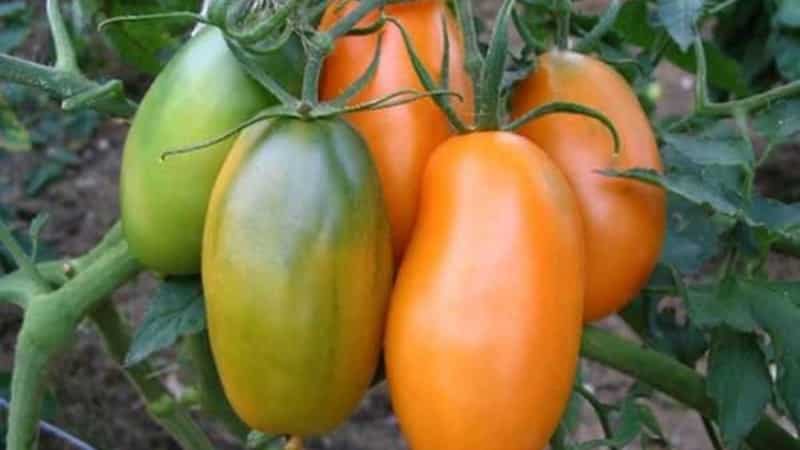
After 2 months, the seedlings are ready for transplanting. At this time, the soil warms up to 15-17°C. They are transplanted into greenhouse conditions 2 weeks earlier, especially since the seedlings are not afraid of frost.
Reference. The sooner the tomato is in the ground, the faster fruiting will occur.
Landing
The beds are prepared 2 weeks before transplanting. The soil is dug up and treated with copper sulfate to prevent the spread of fungal diseases. The holes are prepared not deep, 20 cm, a little mineral fertilizer is placed on the bottom and filled with water. After transplanting, the holes are watered abundantly again and the seedlings are left to get used to the new conditions for 10 days.
Planting pattern: 60 cm – distance between seedlings, 70-75 cm – row spacing. For 1 sq. m place 2-3 plants.
Further care
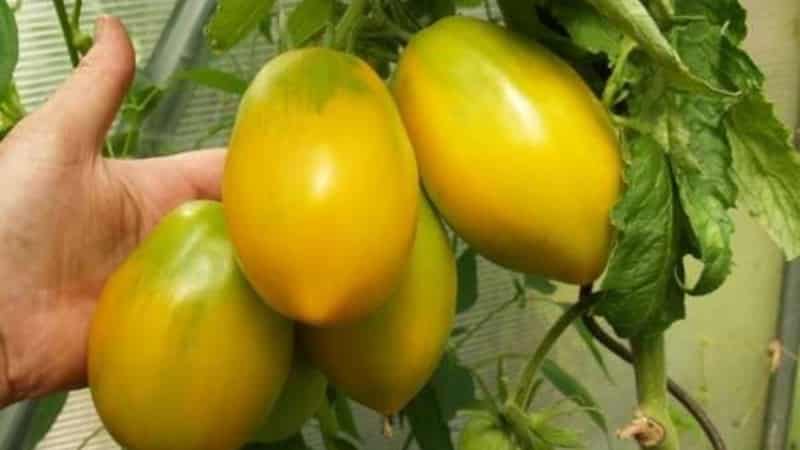
Regular watering is established once a week. Water abundantly, at the root, without getting on the leaves. The ideal time for watering is early morning or evening hours, when the sun is not heating at full strength.When watering during the daytime, leaf burns are possible.
Reference. Plant roots are long, so they tolerate drought more easily than excess moisture.
After watering, the soil is loosened to remove weeds. Loosening promotes better penetration of oxygen to the root system, which has a beneficial effect on the growth of seedlings. To keep the soil moist longer, the beds mulch peat or straw. Using weeds as mulch provides additional benefits. When rotting, it enriches the roots of the tomato with useful substances.
During the season, the crop is fed three times: during flowering, during the formation of ovaries and during fruiting.. A full complex of mineral fertilizers or organic matter is used as fertilizing. From organic matter, mullein infusion and bird droppings are used in a ratio of 1:15.
Bird droppings are more concentrated than mullein infusion, so it is necessary to maintain the appropriate ratio when preparing the solution to avoid burning the roots. During the fruiting period, potassium salts are added to the fertilizer to accelerate the ripening of fruits.
Features of cultivation and possible difficulties
The indeterminate type implies unlimited plant growth. To mark the growth point, it is necessary to pinch the top of the bushes so that they do not waste nutrients on the formation of unnecessary branches. In addition, the higher the branch, the smaller the fruits.
Tall growth requires a mandatory garter, otherwise the stem will not support many fruitful branches and will break from the weight of ripe vegetables. As a support during transplantation, wooden stakes or metal rods are installed next to each bush.Plants are fixed almost immediately upon transplantation, due to which the stem is formed powerful and even. As they grow, fruitful branches are also tied to a support.
Form a culture of 1 or 2 stems, regularly removing all other stepsons. Stepchildren are planted once every 2 weeks, otherwise the plantings may become dense, which will lead to the development of fungal infections. At the end of fruit formation, pinching is stopped.
Diseases and pests
Despite the strong immunity of the culture, preventive measures will not be superfluous. If incorrect watering possible development of diseases such as late blight and brown spot. Therefore, monitoring the level of humidity in the beds is necessary in any weather.
Closed structures must be ventilated, thereby preventing the formation of high humidity. This not only prevents the onset of disease development, but also destroys the usual habitat of greenhouse pests.
 In open ground, plants are susceptible to attacks by parasitic insects such as the Colorado potato beetle, slugs, whiteflies and aphid. These pests can cause considerable damage to any plantings, so it is important to prevent them from entering your garden, as it will be much more difficult to get rid of them.
In open ground, plants are susceptible to attacks by parasitic insects such as the Colorado potato beetle, slugs, whiteflies and aphid. These pests can cause considerable damage to any plantings, so it is important to prevent them from entering your garden, as it will be much more difficult to get rid of them.
Insecticides are used to control insects, but do not forget that the use of chemicals is possible only before flowering begins. Therefore, throughout the entire growing season, they mainly use folk methods.
A soap solution used to treat plant stems protects against aphids and slugs. It is prepared simply: 1 piece of laundry soap is dissolved in 1 bucket of water.
For whiteflies, pheromone traps are installed near tomatoes.Also, strong-smelling herbs are planted nearby, since the pest does not like strong odors.
The Colorado potato beetle is collected by hand, carefully inspecting the bushes from all sides.
Nuances for open ground and greenhouse conditions
Greenhouse bushes often cannot pollinate themselves. High humidity causes pollen to roll into small clumps and cannot move on its own. Therefore, if the gardener does not take control of the pollination process, the number of ovaries will be too low.
Greenhouse plants grow faster than those planted outside, so pinching here becomes especially important. For those who want to get very small tomatoes, you can take your time with pinching, because the higher the branch, the smaller the fruit.
The roots of the tomato are powerful, well developed and stretch far down. For this reason, it does not make sense to water the crop frequently. The tomato thrives in hot and dry climates.
The lower leaves must be removed, since if they come into contact with wet beds they can rot and cause the spread of infections.
It is not recommended to plant tomato crops next to potatoes. Potatoes belong to the same family as tomatoes, and when affected by any infection, they immediately transmit it to the neighboring crop. The same applies to insect pests; they often move to tomatoes from potatoes.
Harvesting and application
Golden tomatoes begin to ripen in the second half of summer. The yield is high, the fruit-bearing branches are literally bursting with ripe vegetables. It is important to prevent over-ripening and unload the bush in time for the full ripening of subsequent vegetables.
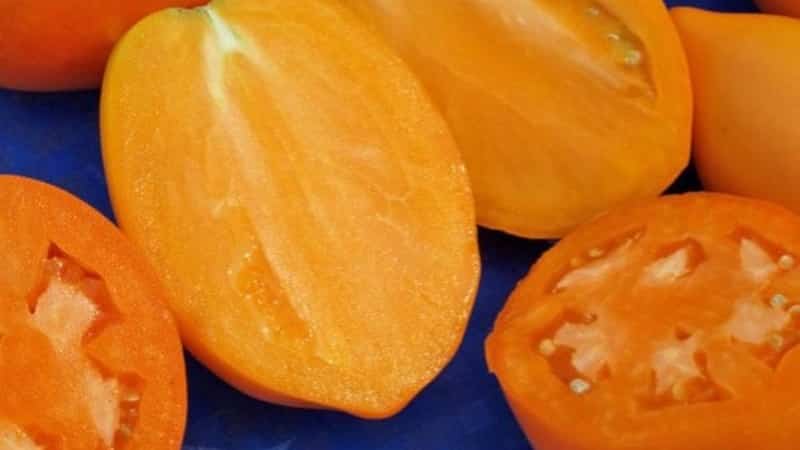 The purpose in cooking is universal; vegetables are especially good when eaten fresh. They are used to prepare a variety of dishes: hot, vegetable, various snacks, delicious salads, purees.
The purpose in cooking is universal; vegetables are especially good when eaten fresh. They are used to prepare a variety of dishes: hot, vegetable, various snacks, delicious salads, purees.
Large fruits are not suitable for canning, but smaller tomatoes are used for making marinades and pickles. Yellow vegetables look very beautiful in a jar together with red ones. They also make excellent adjika, lecho and juice.
Advantages and disadvantages
Golden Koenigsberg has many fans due to its many advantages:
- frost resistance;
- drought resistance;
- possibility of breeding in any region;
- simple agricultural technology;
- good immunity to diseases;
- high yield;
- excellent taste of fruits;
- fortified vegetables;
- marketable condition;
- long storage;
- long transportation;
- versatility in cooking.
The negative aspects include:
- regular stepsoning;
- mandatory gartering and pinching;
- a small number of seeds, which makes it difficult to independently select high-quality seed for subsequent plantings.
Other varieties
In addition to the Golden Koenigsberg, there are two more subspecies: the pink Koenigsberg and the heart-shaped Koenigsberg.
Growing conditions and agricultural practices of all three species are practically the same. The main difference is in the color scheme and weight category of the fruit.
The pink tomato is a copy of the golden one in all characteristics and reviews. Variety indeterminate, high-yielding, well adapted to cold areas and resistant to many diseases. The only significant difference between the two subspecies is the color of ripe vegetables and taste: yellow ones are sweeter, rich in carotene.
The heart-shaped subspecies, judging by the reviews with photos, is distinguished by large heart-shaped tomatoes. Their weight reaches up to 900 g. Of course, these sizes are not suitable for canning, so they are mainly used fresh and for preparing a variety of sauces. In terms of agricultural technology, the subspecies is practically no different from its brothers; it is well adapted to cold terrain and boasts high fruiting rates.
In photographs, Koenigsberg is pink and heart-shaped.
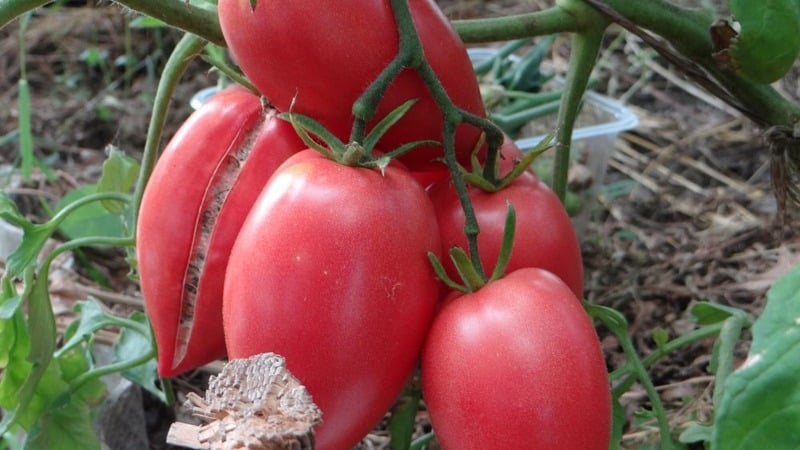
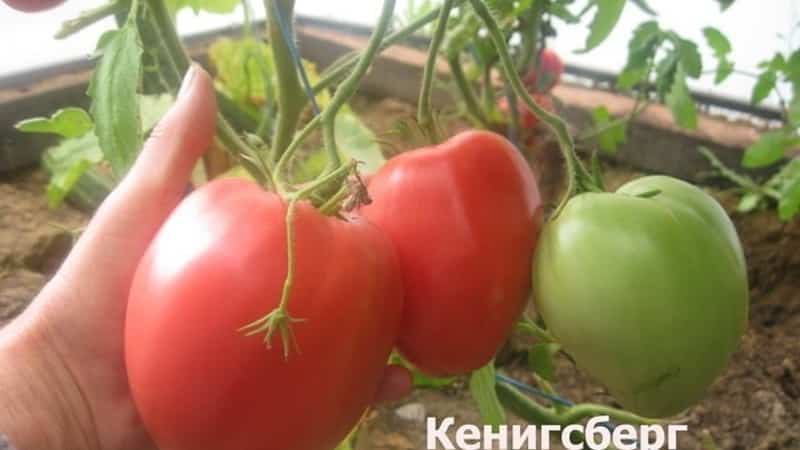
Farmer reviews
Let's listen to the opinions and assessments of gardeners who planted the variety on their plots.
Roman, Tomsk: «Last year I planted a crop from seeds purchased at a specialty store. The result was amazing - the fruits are identical, tasty, beautiful with minimal care. I am inspired to breed this species in the future.”
Irina, Krasnoyarsk: “I’ve been planting this crop for years and I’m quite happy with it. Tomatoes do not require special care, and the harvest is always excellent. The fruits are tasty, juicy, without acid, beautiful when preserved.”
Conclusion
The Koenigsberg golden variety can be called the main one in the Siberian tomato collection. Its unique ability to set fruit at relatively low temperatures has won the special favor of residents of cold areas. The crop is resistant to diseases, has a high rate of fruiting and is easy to care for, which makes it even more in demand among gardeners.